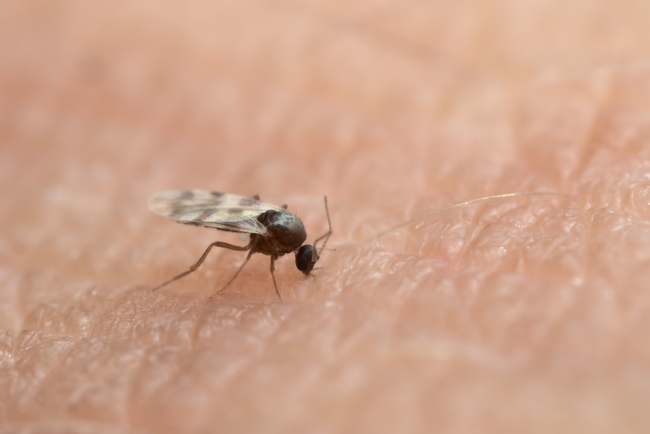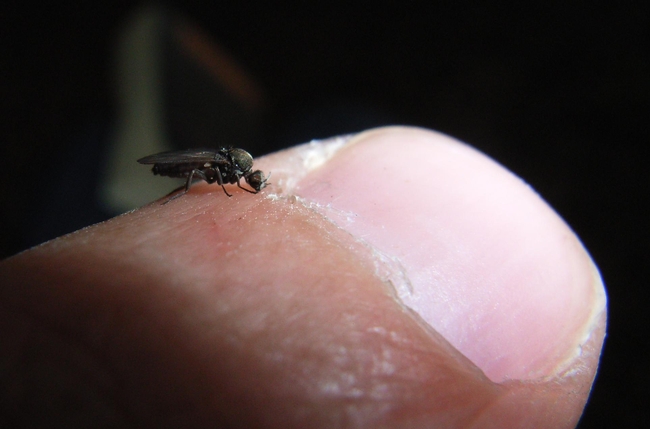July 2023
On May 18, 2023, Vesicular Stomatitis Virus was detected in a horse premises in San Diego County. Since then, several more counties in the southern half of California have reported positive cases of vesicular stomatitis, mainly in horses. Two cattle premises and a rhino in a wildlife park were also confirmed positive for the virus. A current map of affected counties with quarantined premises can be accessed through the California Department of Food and Agriculture (CDFA) at this link. The CDFA also offers a number of informational materials related to Vesicular Stomatitis Virus on this dedicated webpage.
What is Vesicular Stomatitis Virus (VSV)?
Vesicular Stomatitis (VS) is a contagious viral disease that often affects horses, but can also lead to clinical signs in cattle, swine, wild ruminants, small ruminants, and llamas and alpacas, causing painful sores and blisters in their mouths and on their hooves. Though not typically fatal, VS can have significant economic and welfare impacts on affected animals. In rare cases, people can also become infected and develop flu-like symptoms. Understanding VS during the current outbreak is crucial for producers, veterinarians, and anyone involved in the livestock industry.
Transmission and Spread
VSV primarily spreads through direct contact with infected animals. The virus can also be transmitted through contaminated equipment, feed, or water sources. Certain insects, such as, midges, sandflies, and blackflies, can carry and spread the virus from one animal to another. However, there are still some uncertainties about how the virus spreads between animals and between premises.
Clinical Signs
Once animals are infected with VSV, it takes about 2 to 8 days for the first clinical signs to appear. Common symptoms include the formation of painful blisters and sores in the mouth, on the tongue, and around the lips which causes the excessive drooling and reluctance to eat. The virus may also cause similar painful lesions on the hooves and teats. In severe cases, the animals may experience lameness due to hoof lesions further contributing to decreased feed and water intake. Severely affected animals may be dehydrated with metabolic and acid-base derangements (especially ruminants as they produce a large amount of saliva which is critical for buffering the rumen). Animals may lose condition due to the painful lesions.
Impact on Cattle and Livestock Industry
VSV is classified as a "reportable disease," which means it must be reported to the local authorities upon detection. The reason for this classification is the potential for VSV to mimic the signs of other more dangerous diseases, such as foot-and-mouth disease (FMD). Once VSV is suspected, a quarantine will be issued so animals may not leave from the premises until cases have resolved. Timely reporting and temporary movement restrictions for affected premises is the best way to reduce the spread of VS. Call your local veterinarian or your CDFA Animal Health Branch if you suspect a case of VS in your livestock. There is no “punishment” for having the disease in your livestock, other than being under temporary quarantine. Affected animals won't be eliminated as is the case for other livestock diseases such as bovine tuberculosis or Newcastle disease in poultry. Ifeveryone stays vigilant and reports cases of VS, spread of the disease will be minimized.
Plan ahead for interstate livestock movements
When shipping cattle or other livestock interstate, there may now be additional restrictions for the certificate of veterinary inspection required by the importing state. Make sure you plan ahead and discuss with your veterinarian when to schedule visits for health certificates for interstate movement. The same may be true when taking animals to a livestock fair.
Prevention and Control
Preventing VSV outbreaks requires a combination of biosecurity measures and vigilant monitoring. Livestock owners should:
1. Implement strict biosecurity protocols to limit contact between healthy and potentially infected animals.
2. Regularly inspect animals for any signs of the disease, such as blisters, sores, or lameness. Wear gloves when examining mouths to avoid exposure to the virus.
3. Isolate and quarantine suspected cases immediately to prevent further spread.
4. Practice proper sanitation and hygiene when handling livestock and equipment. The virus is susceptible to disinfection with various products including diluted bleach, iodine, quaternary ammonium, and phenolic compounds.
5. Minimize exposure to potential insect vectors by using repellents or insecticides. Check the VetPestX website for information on available products to kill or repel the most important vectors.
Unfortunately, there is no vaccine available for VSV, so biosecurity, hygiene, and vector control are the best ways to prevent the disease.
It's important to note that there is no specific treatment for VSV, and supportive care is the mainstay for affected animals. Veterinarians may recommend pain relief, hydration support, and providing soft and easily consumable feed.
Attached Images:


